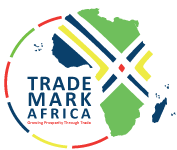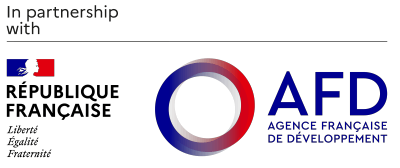Fried fish, fried beef, chicken and fried bananas; oils and fats are as much part of East African life as blue skies and rain showers.
But until recently, what you bought in Uganda to prepare your matoke with and what you used in Tanzania to fry your fish might have looked the same from the label but have been of vastly differing qualities. And none of East Africa’s 140 million citizens might have been the wiser. But not for much longer, the East African Community (EAC) Secretariat, with support from TradeMark Africa (TMA), met in the Burundian capital, Bujumbura; in March, for a regional technical committee meeting on oil seeds, edible oils and fats sector held to harmonise standards of this key ingredient of the daily diet.
“Harmonisation of standards for all sorts of things is one of the building blocks on which to build a strong, integrated East African Community,” said José Maciel, Director of Trade Facilitation (Non-Transport), at TradeMark Africa (TMA).
“It’s one of the reasons that the European Economic Community has become the power house that it is. You need to agree on basic standards for goods to create a level playing field on which traders and consumers will both benefit.”
The edible fats and oils sector is a part of the larger food and beverage industry that commands a US$ 2 billion East African regional market value and, like the regional economy itself, is fast growing.
There is strong demand for oils and fats but not enough regional production to meet it, so imports of blends are commonplace but need to be standardised to be traded freely.
Frontier Market Intelligence, a specialized African market intelligence company, estimates that Kenya, which currently ranks number 15 worldwide for the export of edible oils and fats, produces only one third of its total domestic demand estimated at 380,000 metric tons.
Uganda, according to The Monitor newspaper, reports a similar trend for edible oils: national demand of over 120,000 tonnes, while domestic production was estimated at 40,000 tonnes.
In this regard, the East African Standards Committee together with the East African Business Council (EABC) prioritised the standards under this sector for development, harmonisation or review.
Peter Mutua, Principal Standards Officer at the Kenya Bureau of Standards (KEBS) and Secretary to the EAC Edible Fats and Oils Technical Committee, said harmonisation of these standards will help address regional Non-Tariff Barriers (NTBs) affecting the sector.
NTBs are defined as “quantitative restrictions and specific limitations that act as obstacles to trade”. They appear as rules, regulations and laws that have a negative impact on trade. Some countries, for instance, say milk can only be imported in cardboard cartons while others specify bottles. The milk may be the same, but the different containers make it much more expensive being sold across borders.
“The adoption of regional edible fats and oils standards will also assist international market access for EAC-based edible oil refineries as the EAC standards are based to a large extent on the Codex Alimentarius Standards, which are the international food standards recognized by the World Trade Organisation (WTO)”, Mutua said.
“Standards harmonisation is a win-win situation also for EAC consumers as they will also benefit from imports from other countries/regions whose product specifications are also based on Codex Alimentarius Standards”.
The agreement, which has to be adopted by EAC governments, will promote free trade and give consumers a wider choice over a range of edible oils and products including peanut butter, sunflower, groundnut and soya bean oil.
Participants in this meeting included technical officers from the national bureaus of standards, private sector representatives and regulators of the food industry.
As Secretary to the Committee, Mutua emphasised the Committee’s commitment to ensure completion of technical work on the preparation of the draft standards for adoption and approval by the next meeting of the EAC Standards Management Committee (SMC), scheduled for June/July 2013.
After their technical harmonisation, the standards will be subjected to public review, after which they will be presented to the EAC Standards Committee and finally to the EAC Council of Ministers. Adoption of these important standards is expected to take place by July 2013. Regional harmonisation initiatives are also an opportunity for East African Partner States to work together and deepen regional integration.
Similar initiatives in 2012, with the support of TradeMark Africa, have resulted in the regional harmonisation of approximately US$ 150 million worth of products from the list of most traded goods in the East African region. Those included steel (building & construction), nutrition, surface active agents (chemical), alcoholic and non-alcoholic (food & agriculture) and cosmetics and cosmetic products (chemical).
TradeMark Africa (TMA) is committed to supporting the efforts by the EAC Secretariat and Partner States to facilitate the harmonization of product standards commonly traded in the region.















